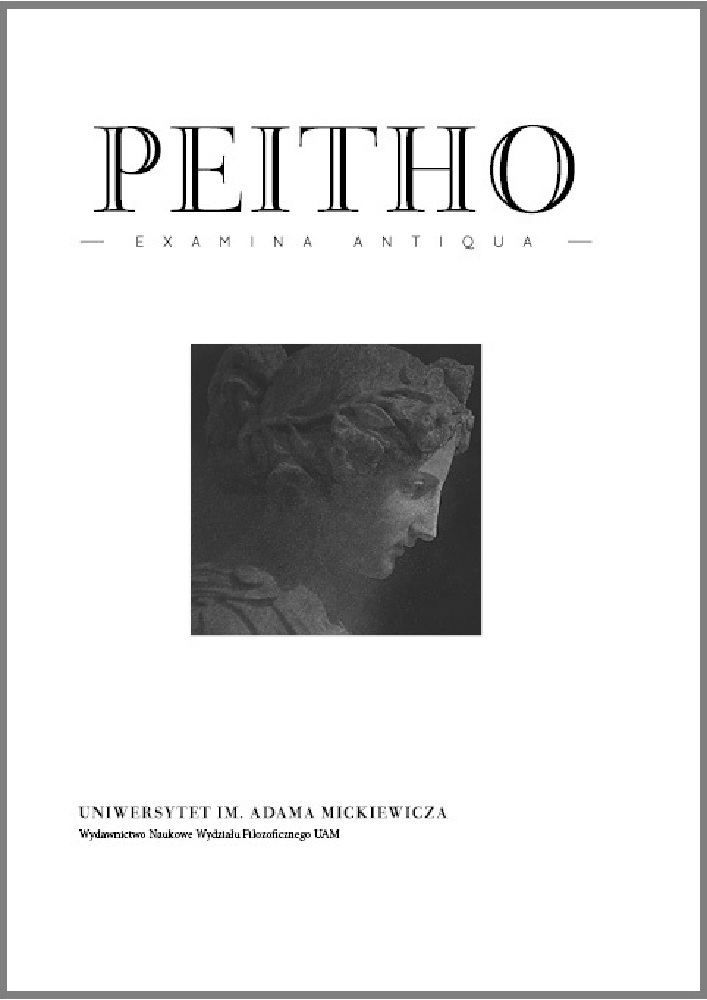Abstract
The inclusion of De astrologia in the Lucianic corpus has been disputed for centuries since it appears to defend astrological practices that Lucian elsewhere undercuts. This paper argues for Lucian’s authorship by illustrating its masterful subversion of a captatio benevolentiae and subtle rejection of Stoic astrological practices. The narrator begins the text by blaming phony astrologers and their erroneous predictions for inciting others to “denounce the stars and hate astrology” (ἄστρων τε κατηγοροῦσιν καὶ αὐτὴν στρολογίην μισέουσιν, 2). The narrator assures readers that he, the knowledgeable astrologer, will correct for the “stupidity and laziness” (μαθίῃ καὶ ῥαθυμίῃ, ibid.) that bring about false predictions. The narrator’s credibility quickly decays when he attempts to recast Orpheus, Bellerophon, Icarus, Daedalus, and a host of other mythological figures as Greek astrologers. Lucian’s audience would expect such far-fetched interpretations of myth from the stereotypical Stoic philosopher, a character lampooned elsewhere in the Lucianic corpus.
References
Bartley, A., 2009, “Lucian’s Contemporary Dialects”, in: A. Bartley (ed.), A Lucian for Our Times, Newcastle, pp. 173–184.
Bompaire, J., 1958, Lucien écrivain: imitation et création, Paris.
Branham, R. B., 1989, Unruly Eloquence: Lucian and the Comedy of Traditions, Cambridge, MA.
Burkert, W., 1972, Lore and Science in Ancient Pythagoreanism, Cambridge, MA.
De Cervantes Saavedra, M., 1996, The History of that Ingenious Gentleman, Don Quijote de la Mancha, Burton Raffel (trans.), New York.
Delacy, P., 1948, “Stoic Views of Poetry”, AJPh 69 (3), pp. 241–271.
Feraboli, S., 1985, “Nota al ‘De astrologia’ di Luciano”, QUCC 20 (2), pp. 155–158.
Georgiadou, A., Larmour, D. H. J., 1998, “Lucian’s ‘Verae Historiae’ as Philosophical Parody”, Hermes 126 (3), pp. 310–325.
Goldstein, B. R., Bowen, A. C., 1983, “A New View of Early Greek Astronomy”, Isis 74 (3), pp. 330–340.
Hall, J., 1981, Lucian’s Satire, New York.
Harmon, A. M., 1967, (trans.), Lucian, Vol. 5, Cambridge MA.
Henderson, J., 2005, (trans.), Aristophanes, Vol. 2, Cambridge, MA.
Jones, A., 2003, “The Stoics and the Astronomical Sciences”, in: B. Inwood (ed.), The Cambridge Companion to the Stoics, Cambridge, pp. 328–344.
Jones, C. P., 1986, Culture and Society in Lucian, Cambridge, MA.
Kidd, D., 1997, (ed.), Aratus: Phaenomena, Cambridge.
Lamberton, R., 1989, Homer the Theologian: Neoplatonist Allegorical Reading and the Growth of the Epic Tradition. Berkeley.
Long, A. A., 1996, Stoic Studies, Cambridge.
Robinson, C., 1979, Lucian and His Influence in Europe, London.
Rochberg-Halton, F., 1984, “New Evidence for the History of Astrology”, JNES 43 (2), pp. 115–140.
Rothstein, E., 2008, October 28, “When Caricature Becomes the Message”, http://www.nytimes.com/2008/10/15/arts/15iht-parody.1.16930745.html.
Saturday Night Live (2008, September 27). Couric / Palin Open, http://www.hulu.com/watch/36863.
Swain, S., 2007, “The Three Faces of Lucian”, in: J. K. Charles Burnett and W. F. Ryan (eds.), Lucian of Samosata Vivus et Redivivus, London, pp. 17–44.
Von Arnim, H., 1903-1905, (ed.), Stoicorum Veterum Fragmenta, Leipzig.
Wieland, C. M., 1820, (ed.), Lucian of Samosata, Vol. II, New York.
License
Peitho provides immediate open access to its content on the principle that making research freely available to the public supports a greater global exchange of knowledge.
